1. Front suspension
2WD (Except high ride suspension specifications)
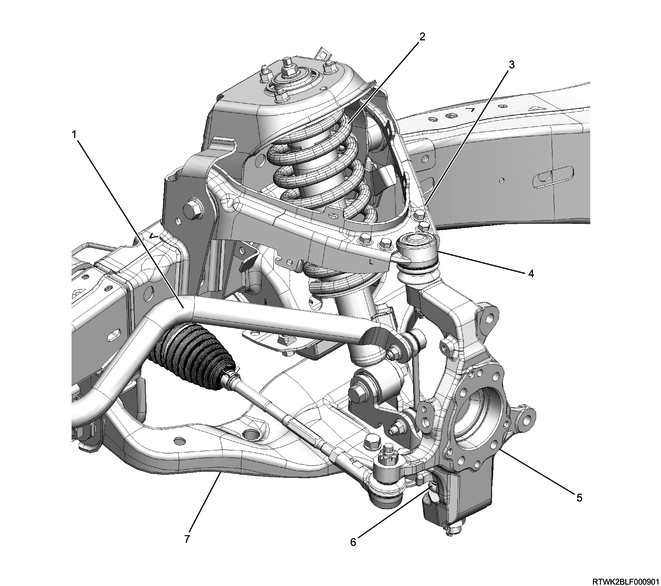
Legend
- Stabilizer bar
- Shock absorber
- Upper link
- Upper ball joint
- Knuckle
- Lower ball joint
- Lower link
2WD (High ride suspension specifications), 4WD
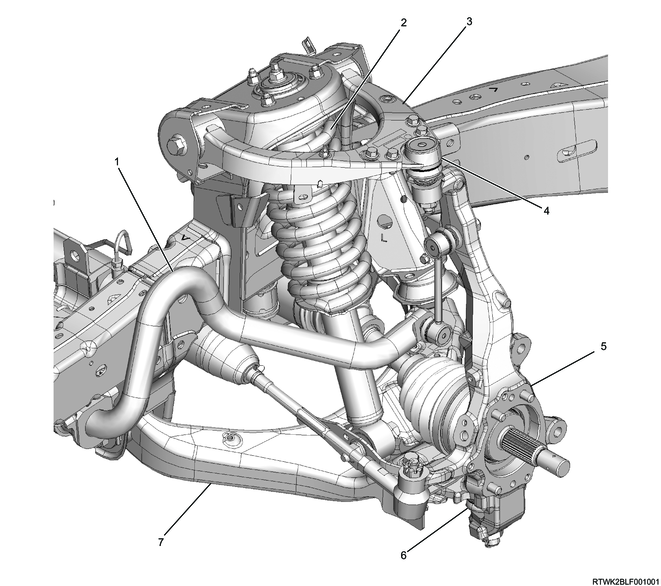
Legend
- Stabilizer bar
- Shock absorber
- Upper link
- Upper ball joint
- Knuckle
- Lower ball joint
- Lower link
2. Rear suspension
2WD (Except high ride suspension specifications)
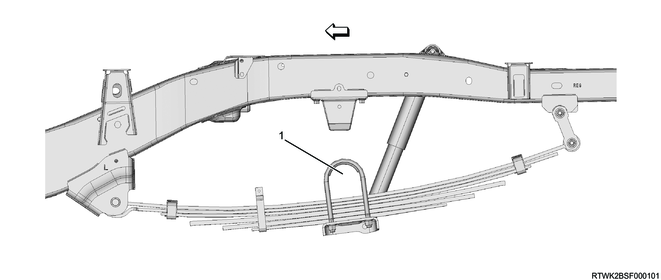
Legend
- Rear axle
2WD (High ride suspension specifications), 4WD
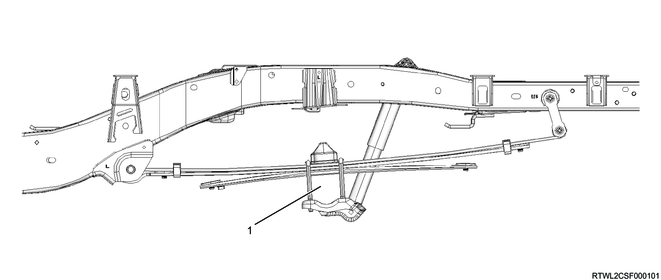
Legend
- Rear axle
3. Wheel, Tire system
A road wheel is comprised of a tire and disc wheel and rotates as a unit. It supports the whole load of the vehicle based on the tire air pressure and maintains proper cushioning. It also enables for transmission of power and maneuverability during steering through the contact surface of the tire.
The functions of tire include load supporting, cushioning, transmission of braking and driving force, handling stability, etc., and all of which are indispensable.
1. Tire structure

Legend
- Bead wire
- Carcass
- Inner liner
- Belt
- Tread section
- Shoulder section
- Side wall section
- Bead section
| Bead wire |
High-carbon steel wire used for reinforcing the rim section of the tire |
| Carcass |
Layers of rubber coated cords bonded to each other that form the skeleton of the tire |
| Inner liner |
A highly airtight rubber layer attached to the inner side of a tire |
| Belt |
A cord layer between the carcass and tread section of the tire that firmly tightens the carcass to increase the rigidity of the tread |
| Tread section |
The thick rubber layer of the tire which comes in contact with the road surface protects the carcass inside from shocks and damage caused by road surfaces, etc., and also has a role in extending the tire wear life. In addition, it is engraved with various kinds of tread patterns. |
| Shoulder section |
A rubber layer between the tread and side wall section that protects the carcass and diffuses the heat generated while driving |
| Side wall section |
A rubber layer between the shoulder section and the bead section that protects the carcass. In addition, information such as the tire dimensions and the manufacturer's name is indicated. |
| Bead section |
A ring-shaped reinforcement section made of bead wires bundled together with rubber coating that affixes the tire to the rim of the disc wheel when filled with air. |
2. Tire tread patterns
Tread patterns are grooves that are engraved in the tread section and have the following functions.
- Drains water
- Obtains braking power, driving power, and towing power.
- Improves maneuverability and stability.
- Heat dissipation from the tire
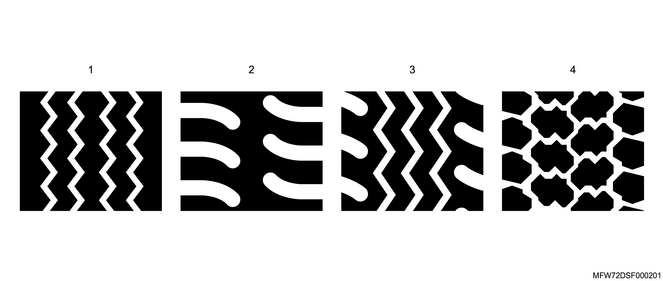
Legend
- Rib
- Lug
- Rib lug
- Block
| Rib |
Excellent maneuverability and stability with little resistance when rolling |
| Lug |
Excellent braking power, driving power, and towing power on unpaved roads |
| Rib lug |
Combines rib tires and lug tires, and has the features of both |
| Block |
Provides excellent braking and driving power, and is frequently used on snow covered and muddy roads |
3. Tire indications

Legend
a. Cross-section width
b. Cross-section height
4. Disc wheel indications
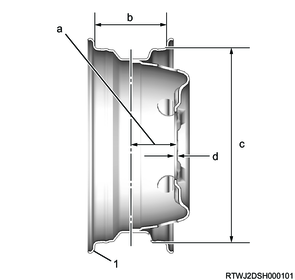
Legend
- Rim type of flange section
Legend
a. Offset
b. Rim width
c. Rim diameter
d. Board thickness
5. Tire size indications
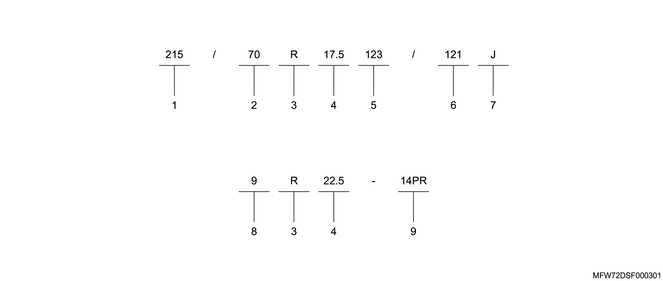
Legend
- Cross-section width (mm)
- Aspect ratio (%)
- Structure symbol
- Rim diameter (inch)
- Load index (single wheel)
- Load index (dual wheel)
- Speed symbol
- Cross-section width (inch)
- Tire strength
| Cross-section width (mm) |
The width obtained when the pattern, letters, etc., on the side surface of the tire have been subtracted from the whole tire width |
| Aspect ratio (%) |
A value that represents the ratio of the cross-section height in relation to the cross-section width Aspect ratio (%) = (Cross-section width/ Cross-section height) x 100 |
| Structure symbol |
R indicates the radial structure. |
| Rim diameter (inch) |
Tire inner diameter |
| Load index (single wheel) |
A value that indicates the maximum loading capacity when the tire is used as a single wheel under a specified condition |
| Load index (dual wheel) |
A value that indicates the maximum loading capacity when the tire is used as a dual wheel under a specified condition |
| Speed symbol |
A symbol that indicates the maximum speed at which the tire can run under a specified condition. J stands for 100 km/h {62 mph}, and L stands for 120 km/h {75 mph}. |
| Cross-section width (inch) |
The width obtained when the pattern, letters, etc., on the side surface of the tire have been subtracted from the whole tire width |
| Tire strength |
The larger the value is, the higher the strength becomes. In other words, the air pressure inside the tire can be set higher, and the tire load capacity is high. PR is the abbreviation for ply rating. |